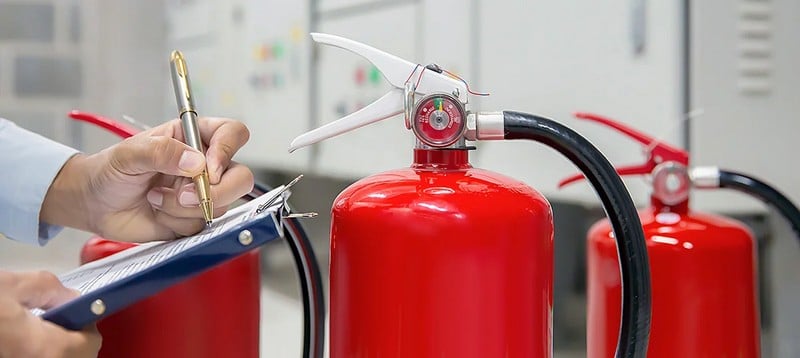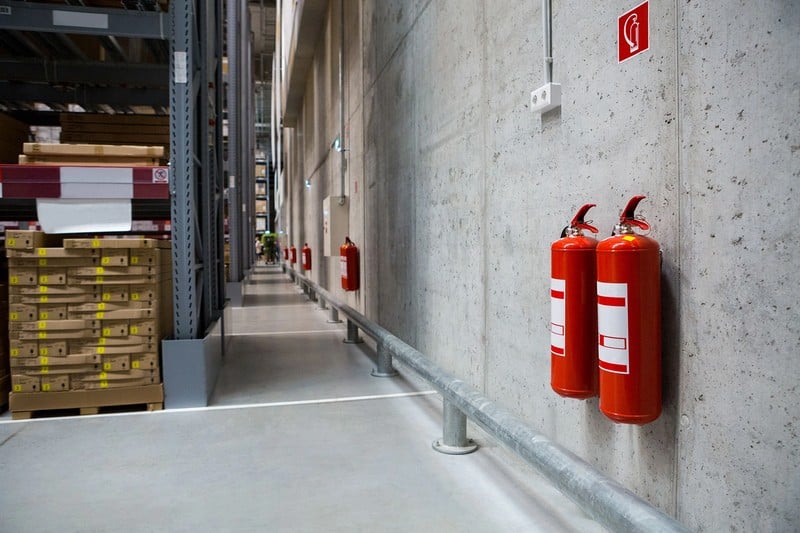
Knowing where to store fire extinguishers is a critical component of any fire safety strategy. Whether you’re managing a warehouse, a retail storefront, or a construction site, understanding the differences between indoor and outdoor storage can help you avoid costly mistakes. A frequently asked question is: can fire extinguishers be stored outside?
This article breaks down the core considerations, benefits, and challenges associated with indoor and outdoor extinguisher placement, helping you make informed decisions that support compliance, safety, and reliability.
Indoor Storage: Controlled Conditions, Lower Risks
Indoor fire extinguisher placement is ideal in most cases because interior environments provide stability. Controlled temperature, limited humidity, and protection from tampering all contribute to prolonged equipment lifespan and optimal functionality.
Indoor units are generally easier to monitor, inspect, and access during emergencies. They are also more likely to comply with OSHA’s accessibility guidelines and NFPA’s placement requirements, which dictate that extinguishers must be visible and unobstructed.
That said, improper indoor storage—such as behind furniture, inside locked cabinets, or in high-traffic areas where damage may occur—can diminish their usefulness. Mounting units on walls at the correct height with clear signage helps avoid these pitfalls.
Outdoor Storage: Necessary in Select Scenarios
There are situations where storing extinguishers outdoors is not only practical but necessary. Fuel stations, external work areas, open-air facilities, and detached structures often require easy access to fire extinguishers outside the main building.
However, outdoor placement comes with a higher level of risk. Exposure to rain, snow, UV rays, temperature extremes, and even theft or vandalism can compromise an extinguisher’s reliability. Without proper mitigation measures, such as weatherproof cabinets and increased inspection frequency, outdoor extinguishers may fail when needed most.
So, while the answer to can fire extinguishers be stored outside is yes, it demands more rigorous oversight.
Key Differences Between Indoor and Outdoor Storage
Both indoor and outdoor locations require planning, but each introduces unique challenges.
Environmental Exposure
Indoor extinguishers are protected from environmental stressors, while outdoor units face constant exposure. Temperature swings can reduce pressure levels, and moisture can lead to rust or clogging. UV degradation can also erode labels and weaken materials.
Maintenance Frequency
Outdoor extinguishers must be inspected more often due to the accelerated wear they experience. Indoor extinguishers still need regular checks, but are generally more stable over time.
Equipment Requirements
Outdoor-rated extinguishers should meet specific temperature and corrosion resistance standards. Indoor extinguishers may not require such rugged features, but should still meet UL and NFPA requirements.
Security Considerations
Indoor locations reduce the risk of unauthorized use, while outdoor settings are more vulnerable to tampering or theft. Lockable cabinets and surveillance can help mitigate this risk.
Best Practices for Each Scenario
Choosing the right storage approach depends on your environment, regulatory requirements, and risk profile.
For indoor storage:
- Mount units at an accessible height and location.
- Keep signage visible and legible.
- Avoid obstructed or high-risk areas.
For outdoor storage:
- Use weather-resistant cabinets.
- Choose extinguishers with cold-weather or corrosion-resistant ratings.
- Inspect more frequently, especially after extreme weather.
- Secure units to prevent theft or misuse.
Compliance Implications
Improper placement or degradation due to environmental exposure can lead to serious compliance issues. OSHA and NFPA 10 outline clear rules regarding visibility, accessibility, and operability. Failing to comply can invalidate insurance, result in fines, or increase liability.
A strong exterior fire safety plan should include seasonal assessments and routine updates to extinguisher placement based on environmental shifts. For more detail on compliance and regulatory expectations, consult the CCOHS Portable Fire Extinguishers Fact Sheet.
Answering Common Questions
Can I store a fire extinguisher in my vehicle?
Yes, but it must be secured and rated for fluctuating temperatures. A vehicle-rated dry chemical extinguisher in a mounting bracket is recommended.
What type of extinguisher is best for outdoor use?
Dry chemical ABC extinguishers rated for temperatures as low as -65°F are ideal. CO2 extinguishers also perform well in colder climates, provided they are stored in insulated cabinets.
Do outdoor extinguishers expire faster?
They are more likely to degrade quickly if not protected. Regular inspections and weatherproofing can help maintain longevity.
Final Thoughts
So, can fire extinguishers be stored outside? Yes, but not without precautions. Indoor storage remains preferable for most facilities due to environmental stability. However, when outdoor placement is necessary, applying best practices—from equipment selection to cabinet installation and inspection routines—is critical.
Ultimately, proper extinguisher storage is about more than meeting requirements. It’s about ensuring your fire safety plan is functional, accessible, and resilient in any condition.
For additional recommendations on extinguisher placement and maintenance, the NFPA 10 Standard is an essential resource.









